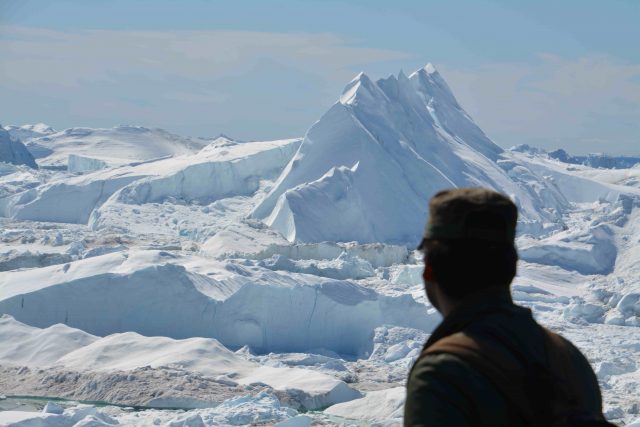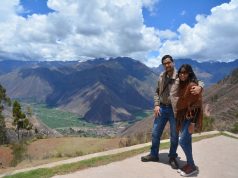Around the World with the Most Travelled Indian
 By Nitin Gairola
By Nitin Gairola
In the far north of this world of ours lies the mega Arctic ice cap of Greenland and it is the 2nd largest ice sheet in the world. No prizes for guessing that in the south we have the largest one on Planet Earth named Antarctica (Ant-Arctic or ‘polar’ opposite to the Arctic). A fun fact is that the north is an ocean (The Arctic Ocean) surrounded by land whereas the south is a land surrounded by ocean (The Southern Ocean).
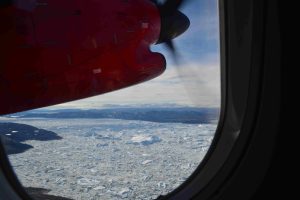
Greenland and its polar bears have long been the symbol of climate change, as ancient glaciers and surface ice is rapidly melting in this frozen world. This is leaving less and less space for these iconic white bears and other Arctic wildlife to roam and find food. Now many have to swim long distances to find prey and that’s why many don’t make it through the summer months when ice is less.
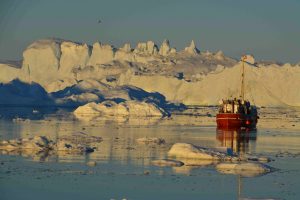
While Antarctica is also often referenced when scientists want to show climate change or global warming in action, it is the Arctic that gets more coverage since it is much more fragile as an ecosystem. The reason for this is the fact just mentioned. You see, the oceans absorb sunlight far better than land. So, the Arctic Ocean absorbs a lot more of the heat whereas the Antarctic landmass reflects a lot more of it. Besides, Greenland and other Arctic islands of Canada and Russia are far smaller and scattered than the singular mega mass of Antarctica. This also is a reason why the Antarctic temperatures have even gone down to minus 89 degrees centigrade whereas the Arctic’s lowest recorded one has been ‘only’ minus 69, in Greenland itself in 1954. The average can hover around minus 30 to minus 40 C. That’s why it is rightly said that, while the possible impact of a dramatic ice melt in Antarctica on sea level increase will be way more than that in the Arctic, it is however a far less likely outcome since it’s the Arctic that’s melting faster presently.
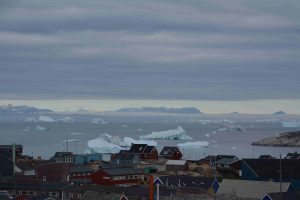
These 2 polar ice deserts are always in the news and represent both adventure and planetary risk and there is nothing like landing there to report global warming and climate change in action. It is far better than writing an article from second-hand information found in scientific journals which themselves come from second-hand accounts. So, this is my first-hand reporting after visiting both polar regions and it is the Arctic that has caught my eye too, although I am no scientist, just a tourist.
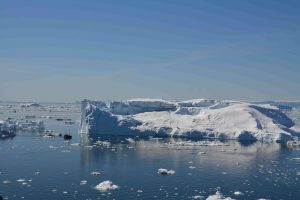
It’s been calculated that if all the ice in Greenland melts, it can potentially add 25 feet or 8 metres to global sea levels (scientists expect a 2 to 3 feet or almost a 1-metre rise by year 2100). However, if all the ice in Antarctica were ever to melt it would mean a sea level rise of 175 feet or around 57 metres. That would be the end of the terrestrial planet as we know it. It would be a ‘water world’ and Hollywood would lap up that plot.
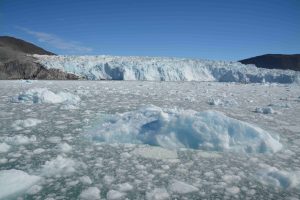
Well Hollywood should be ready since it is so good at exaggeration and, in any case, the melt in the Arctic has started even if the US Republican government doesn’t believe in it. In fact, if I recall correctly, a certain president wanted to ‘buy’ Greenland from Denmark. While he is ‘seriously funny’ and makes for amazing airtime, the worry is that this leader is actually serious when he is funny. Kind of shows the state of affairs amongst the high and mighty and how detached people can become from the natural world and long-term reality. It might even be one of the reasons why they are able to have such a single-minded pursuit of greatness since it takes a very human-centric view of reality to be this ‘successful’, the way the world defines success to be.
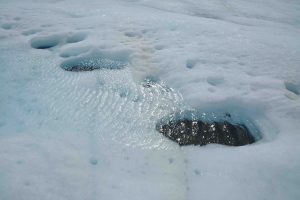
Currently, even if we consider conservative estimates, since we know all of Arctic and Antarctic ice won’t melt soon, we will still have over 130 coastal cities, 50 million people and trillions of dollars of assets at risk due to the change in our planet’s climate (statistics taken from an earlier National Geographic piece). And we know even a marginal change in temperatures and precipitation can lead to positive feedback loops. Hence, a warming planet goes into further warming and so on. After multiple actual measurements over the past 70 odd years, it’s been found that majority of the Arctic glaciers have either receded or have completely vanished and only a very small minority have retained their size or in the rarest of cases, expanded.
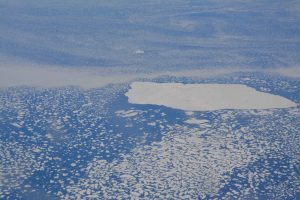
Also, for perspective, in the last 400,000 years till the start of the industrial age (only 265 years ago), the carbon dioxide or CO2 levels in the atmosphere have been in a cyclical range 180-280 parts per million (ppm). This means that while Nitrogen remains the dominant gas in our atmosphere at 78%, Oxygen is at 21%, Argon is 0.9% and the balance 0.1% are all the others. But it is in this 0.1% that all the current risk lies, since this includes greenhouse gases such as carbon and methane. Carbon historically has been only around 0.02% of our atmosphere or 200 parts per million. But, by the 1950s, it had risen to 300 ppm and by the turn of the millennium, it was 380. Just 20 years later, in 2020, it was 411 ppm and in 2024 that number had further risen to 423 ppm. Shockingly, in 2025, it is 429 ppm or 0.043% of the atmosphere.
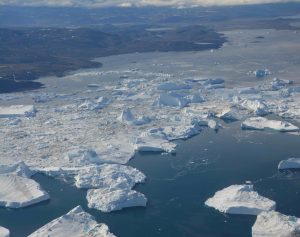
So, you can see where this is going as the change is noticeable within one lifetime, and that’s very unusual in nature. It’s more than a 50% increase over the historic upper range (280 ppm) of the last 400,000 years of Earth’s history, most of which was without modern man. This is since man or Homo Sapiens came just 200,000 years ago and the man that can harm the environment (via burning of fossil fuel) was born just 265 years ago. No one knows exactly how the planet will respond to such never seen before carbon levels, but one thing is certain – carbon levels, global temperatures and global sea levels move in tandem.
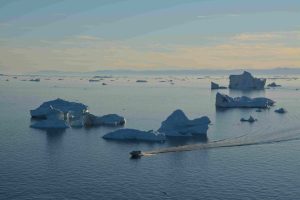
Millions of people, especially marginalised populations in South and Central Asia and those in the Andean Mountains in South America, depend on glacial water for drinking, irrigation and hydropower. A loss or unpredictability of it could lead to mass scale migrations and chaos. Besides, the low-lying nations of the Pacific Ocean such as the islands scattered all over Polynesia, Melanesia and Micronesia can have vast areas of their land lost to the rising seas. Populous cities such as Mumbai, Dhaka and Ho-Chin Min have a huge people risk, and places such as Miami, New Jersey, Shanghai and Hong Kong have an asset risk. Climate change will also bring unpredictability of weather such as out-of-season hurricanes, flash floods, droughts, etc., for which humans and animals alike will be unprepared.
I am only reporting what many scientists have already reported on climate change and a lot of influential voices have even reached the UN and Climate Summits such as the ones that took place in Dubai, Paris, Rio, etc. Even a name as well-known as Leonardo DiCaprio spoke at the UN Headquarters to world leaders post the release of his ‘The 11th Hour’ documentary. The US president that never was, Al Gore, is another very well-known voice on climate change and has numerous Ted Talks on the subject besides his documentary called ‘An Inconvenient Truth’. This documentary is what woke me up at the age of 26 and a year later my world tour had started, not knowing at that time where it was headed. Besides these 2 intellectuals, there is the teen face of the environmental movement – Greta Thunberg of Sweden (sort of like the Britney Spears of climate science). And I have kept my favourite name for the last – Sir David Attenborough. He was always linked to wildlife and the loss of biodiversity rather than to climate change, but his recent documentaries do highlight his climate concerns.
But the worry is that, if these people – DiCaprio, Al Gore and Attenborough can’t convince the political and industrial big-wigs, then who can? Elon Musk (I used to be a fan) worries about our imploding population and wants to send man to Mars. But doesn’t he understand that, at 8 billion plus people, we are far beyond the Earth’s carrying capacity and Mars is not Plan-B. Mars has no trees or oxygen or water, and we have all of this here on Earth. Isn’t it more prudent not to over-populate and over-industrialise our planet so that we can just stay here in this paradise that isn’t lost…. just yet.
(Nitin Gairola is from Dehradun and has travelled the natural world more than almost any Indian ever. He is on the verge of becoming the first to travel to every Desert, Forest, Grassland, Tundra & Ice biomes on Earth. Nitin has set world travel records certified by India Book of Records, has written for Lonely Planet and holds National Geographic conservation certifications. He is also a senior corporate executive in an MNC and in his early days, used to be a published poet as well. Reach him at: www.facebook.com/ MostTravelledIndian/)

